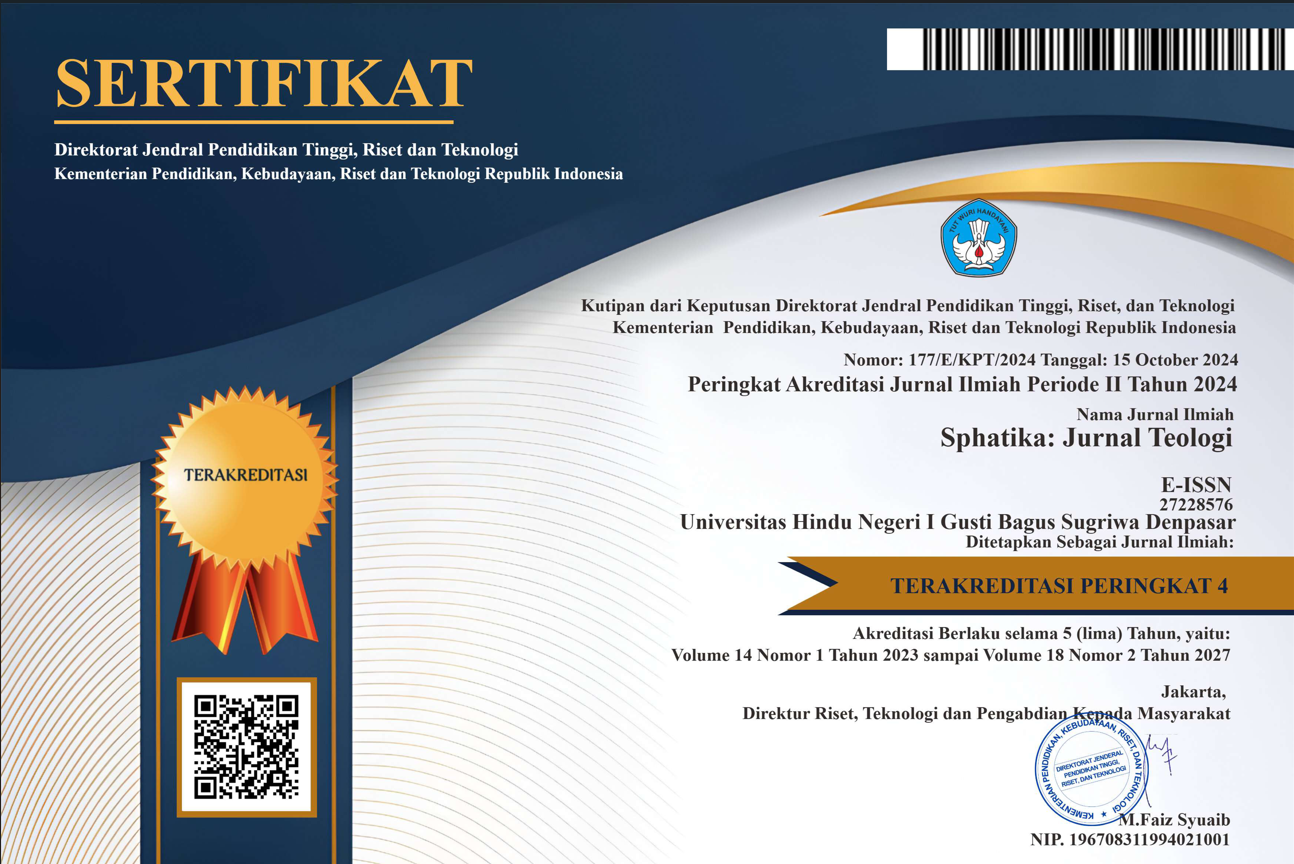Ajaran dalam Teks Śilakramaning Aguron-Guron
DOI:
https://doi.org/10.25078/sphatika.v11i2.1964Keywords:
śilakramaning aguron-guron; student.Abstract
The problem of juvenile delinquency has special attention from various parties and other relevant agencies. But some parties consider that is not something extraordinary. The naughtiness is considered as a psychological phase that is natural and everyone will experience at a certain age. Teen ages are considered as the puberty phase where they are looking for self-identity. When looking for that identity, teenagers or students are often misdirected or misguided. In a traditional doctrine contained in the Lontar Śilakramaning Aguron-guron which is one of the sources literature used as a rule of study. This article aims to explore, elevate, and introduce sources of local wisdom as a source of information to increasing the knowledge. The meaning of the Lontar Śilakramaning Aguron-guron text as one of the guidelines for realizing students who have high character, including students are obliged to dutiful and obedient to teachers; students are able to uphold the principles of truth; students are able to distance themselves from inappropriate characters, attitudes, and behaviors; students must use a polite, clean, and neat clothing; students are required to have pure hearts and minds; students are able to control the passions.
References
Agustriyana, Nur Astuti. 2017. "Fully Human Being Pada Remaja Sebagai Pencapaian Perkembangan Identitas". Jurnal Bimbingan Konseling Indonesia, Vol. 2 (1): 9-11
Bhāsya of Sāyanācārya. 2016. Catur Veda Saṁhitā. Surabaya: Pāramita
Dauh, I Wayan. 2019. "Ajaran Karmaphala dan Panca Satya Dalam Geguritan Jaya Prana". Jurnal Widya Wertta, Vol. 2 (1): 52-65
Donder, I Ketut. 2006. Siṣya Siṣṭa: Pedoman Menjadi Siswa Mulia, Religiopsikososioedukatif. Surabaya: Paramita.
Kadjeng, I Njoman, dkk. 1995. Sarasamuccaya. Bali: Proyek Peningkatan Prasarana dan Sarana Kehidupan Beragama.
Mantra, Prof. Dr. IB. 1990. Tata Susila Hindu Dharma. Denpasar: Upada Sastra.
Puniyatmadja, I.B. Oka. 1976. Çilakrama. Jakarta: Parisada Hindu Dharma Pusat.
Pudja, MA. Gde dan Tjok Rai Sudharta. 2004. Mānava Dharmaśāstra. Surabaya: Paramita.
Sarman. 2017. "Ungkapan Tradisional Sebagai Sumber Kearifan Lokal". Alayasastra, Vol.13 (1): 1-9.
Suarka, I Nyoman. 2018. Prosiding Seminar Nasional Bahasa, Sastra Daerah, dan Pembelajarannya. "Etiket Siswa Menurut Lontar Śilakramaning Aguron- guron". Hal: 161-171.
Titib, I Made. 1996. Veda Sabda Suci, Pedoman Praktis Kehidupan. Surabaya: Paramita.















